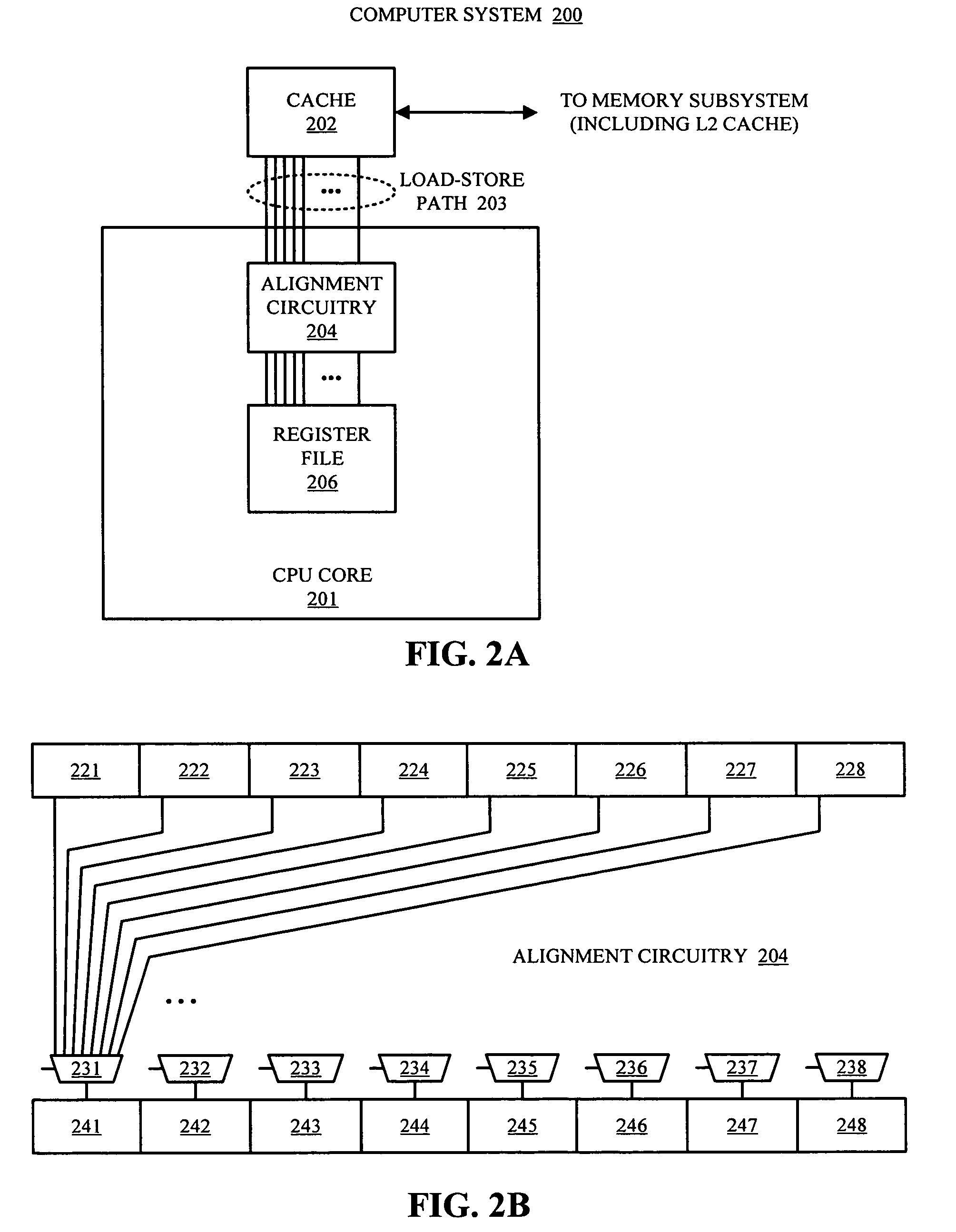Instructions for efficiently accessing unaligned partial vectors
a technology of partial vectors and instructions, applied in the direction of program control, computation using denominational number representations, instruments, etc., can solve the problems of not being able to perform the same in all systems and applications, placing the burden of aligning data on the processor hardware, and inefficient multi-step process
- Summary
- Abstract
- Description
- Claims
- Application Information
AI Technical Summary
Benefits of technology
Problems solved by technology
Method used
Image
Examples
example
[0090]Table 3 illustrates how vector code can be written to perform a partial-vector-move operation in accordance with an embodiment of the present invention. This example loads a partial-vector-sized datum from an unaligned address, processes the partial-vector-sized datum, and writes the partial-vector-sized datum to another unaligned address on a little-endian processor. Note that in this example, there are two vector-select operations per move. (FIGS. 7A and 7B graphically illustrate the how the move operation is accomplished.)
Example which does not Construct an Aligned Vector
[0091]Table 4 illustrates how vector code can be written to perform a partial-vector-move operation in which an aligned vector is never constructed in accordance with an embodiment of the present invention. This example similarly performs a partial-vector-move operation for arbitrarily-aligned source and destination pointers on a little-endian processor. However, in this example a proper vector is never for...
PUM
 Login to View More
Login to View More Abstract
Description
Claims
Application Information
 Login to View More
Login to View More - R&D
- Intellectual Property
- Life Sciences
- Materials
- Tech Scout
- Unparalleled Data Quality
- Higher Quality Content
- 60% Fewer Hallucinations
Browse by: Latest US Patents, China's latest patents, Technical Efficacy Thesaurus, Application Domain, Technology Topic, Popular Technical Reports.
© 2025 PatSnap. All rights reserved.Legal|Privacy policy|Modern Slavery Act Transparency Statement|Sitemap|About US| Contact US: help@patsnap.com



